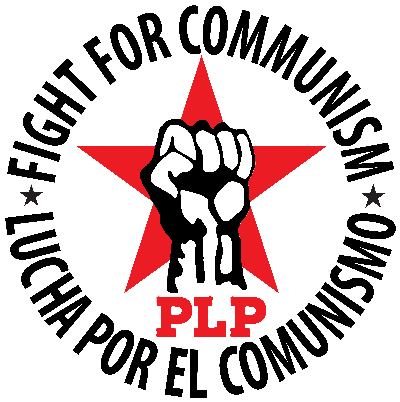Members of our Progressive Labor Party (PLP) club in Kentucky recently hosted a trip to the West Virginia Mine Wars Museum in Matewan to learn about one of the biggest labor uprisings in history known as the Battle of Blair Mountain. Among the key lessons we learned was the central role of multiracial unity in labor struggles, the need for militancy and even armed struggle in the battle against the bosses, and the danger of betrayal by union leaders. We held a cadre school after the visit and another friend showed interest in joining the ranks of the PLP.
PLP members and friends from Washington D.C., Kentucky, and Tennessee toured the Mine Wars Museum in Matewan and gravesites of Sid Hatfield. The museum tour summarized the history of union organizing in West Virginia that led up to the Battle of Blair Mountain. The early United Mine Workers of America (UMWA) was one of the first unions to employ Black organizers. One of them, Dan Chain (AKA “Few-clothes Johnson”), was featured in the 1980s movie “Matewan” and was a prominent organizer during key strikes leading up to Blair Mountain. He was also one of the “dirty-eleven”, a group of militants who used armed resistance against the coal companies.
Miners showed the way to workers in militancy against the bosses
We moved on to the gravesite of Sid Hatfield, the sheriff who had a shootout with anti-miner thugs, killing Baldwins-Felts agents who were trying to evict miners living within city-limits. At the gravesite, a PLP member from Kentucky gave a speech linking the global warming impacts of coal mining to the working class struggle and the broader analysis of the need for communist revolution, something the miners had missed.
The miners who fought at Blair Mountain made the naive mistake of thinking that the U.S. National Guard was not their enemy, despite the fact that they were prepared to drop bombs on the miners in the event that they did not surrender to the coal bosses. We also learned that the iconic Mother Jones misled the miners after supporting them initially. She claimed that she had a telegram from President Harding promising an end to the coal bosses’ tyranny on the condition that the miners return home, but this was a lie! The miners marched on Blair Mountain despite this confusion. What an education!
PLP members study worker-led fights to learn how to defeat the bosses
The next day Kentucky PL’ers hosted a cadre school in Williamsburg, centered around Palestine and nationalism. Members from Kentucky explained how the current genocide in Gaza will not be solved through nationalism, and how workers can only end war and imperialism and racism through internationalist class struggle against both the Israeli and Palestinian bosses.
The conversation shifted towards unions and how there is a need to bring internationalism into the workplace, and link up local struggles with the wider class struggle, creating a sense of solidarity between workers in the U.S. and Gaza. A worker at the cadre school shared her struggles with her own union and started a wider conversation about how unions can betray the rank and file and seek to make deals with the bosses, and how unless we bring revolutionary politics into the workplace we are stuck fighting for reforms that eventually get taken away over time.
The history of our class is filled with stories of militancy, multi-racial unity, betrayal by union leaders, and the prospects for revolutionary struggle. Long live the Battle of Blair Mountain!

